Competency-Based Education in the K-12 Space
CompetencyWorks Blog
Yesterday I had the opportunity to do a rapid “everything you wanted to know about Competency-Based Education in the K-12 Space” in 15 minutes at the C-BEN Fall meeting. For those of you who wanted to go a bit deeper or for those of you unable to attend the meeting, here is what I covered. I’ve also written a four-part reflection on the intersection of higher education and K-12 early this year. (Read parts one, two, three, and four here.)
In creating CompetencyWorks, Susan Patrick, CEO of iNACOL, and I wanted to create a nimble capacity to learn from those educators who were converting to competency-based education and disseminate it to other innovators as quickly as possible. Along with partner organizations, we have visited dozens of schools and districts each year so that we are always learning from the cutting edge. See CompetencyWorks.org and this article with links to descriptions of how districts and schools are designing their models.
What is competency-based education, and how is it similar or different from institutions of higher education?
At the highest levels, the working definition of competency-based education (CBE) developed by 100 innovators in 2011 (below) and the definition by C-BEN are very, very similar. It is important to know that in your state, competency-based education might be called mastery-based, proficiency-based, or performance-based. To date, we think these all refer to the same approach.
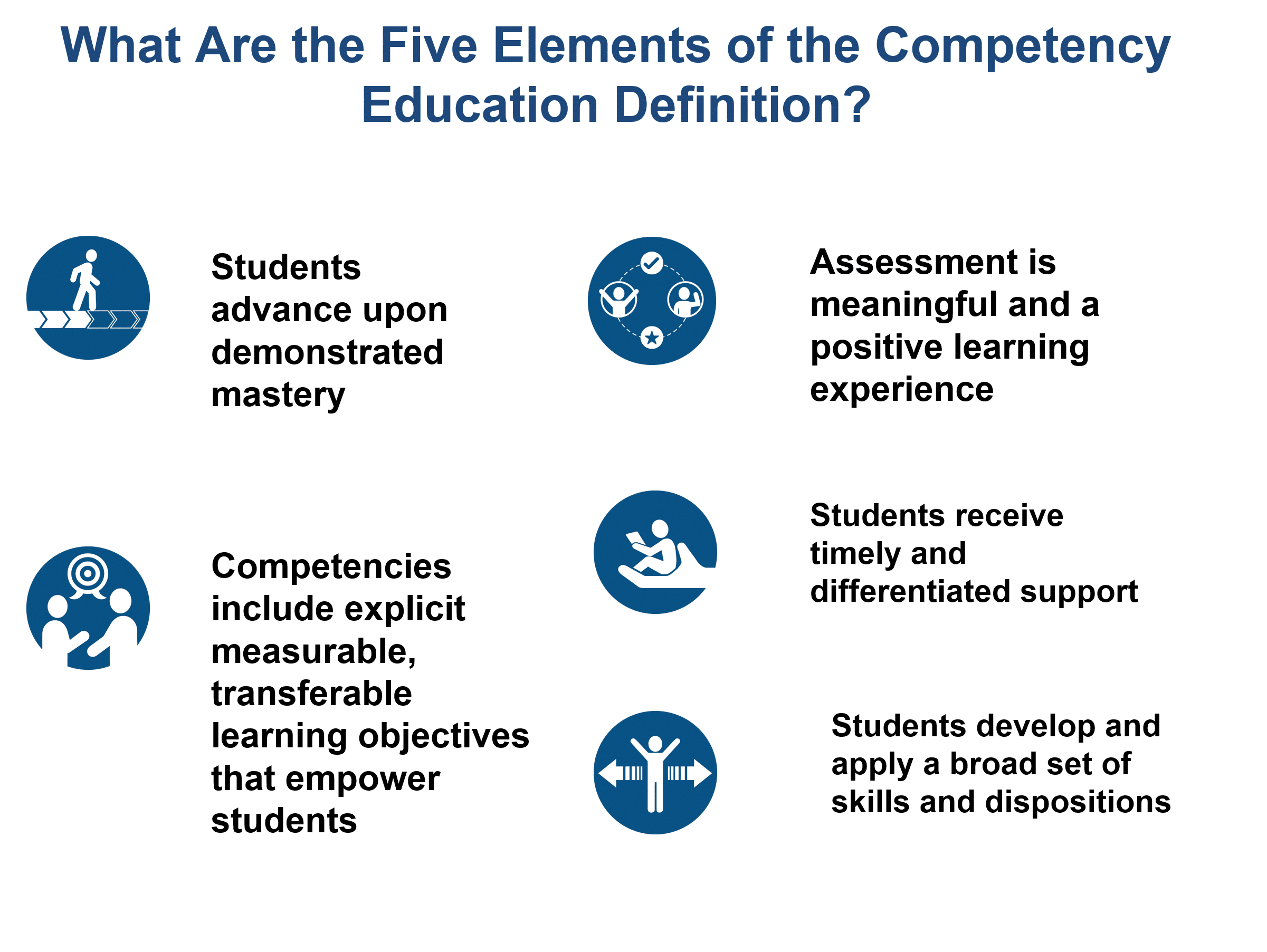
We have found that to help people understand competency-based education, it is important to understand why the traditional system is an obstacle toward improving our education system. Here are a few of the reasons that the traditional system produces low achievement, graduates students unprepared for college, and reproduces inequity.
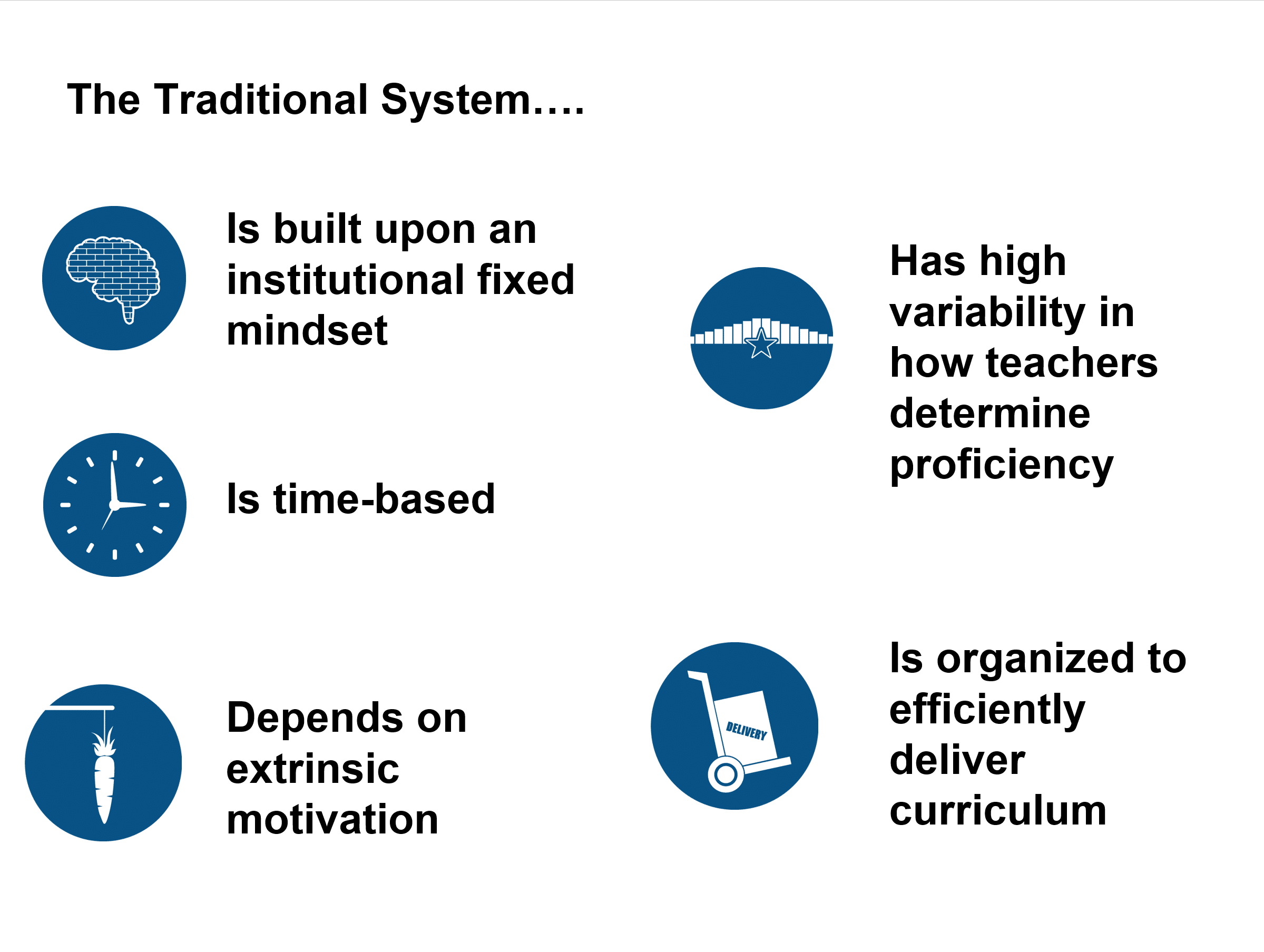
In the context of the two sectors of K-12 and higher education, the differences are about emphasis, design, and implementation. Here are a few examples:

In K-12, we believe CBE will be most impactful when implemented across an entire district and, at a minimum, as a school-wide approach. There are new school models, but the primary effort in K-12 is the conversion of districts from the traditional system to a competency-based system. In higher education, the most energy to date has been on creating programs, many of which are online. There are examples like the University of Maine at Presque Island, where they are creating a campus-wide approach that is very similar to the proficiency-based process used by the districts in their region.
Higher education also can segment markets, targeting different programs to different customers. The result is that there may be an online program and a competency-based online program for students to choose from. In K-12, we think about designing systems that will work for all students. In fact, we are trying to design a system that embeds accountability and responsibility for ensuring every student is progressing into the system itself.
In higher education, some programs can screen students for their executive functioning skills so that they have the habits of success that will allow them to be successful in competency-based education. In K-12, the minute schools separate out academic from behaviors in the grading process, and stop using points to try to extrinsically motivate students to be “good students,” it needs to be replaced with strategies to help students build a growth mindset, social-emotional skills, and habits of success. We call these the lifelong learning skills that students need to be successful in college and careers…and life.
It would be a valuable task to really look at what is similar and different in strategies and practices, as both sectors would benefit from looking at other ways of doing things.
What are the big challenges facing K-12?
There are many challenges facing the K-12 districts and schools that are converting to CBE. However, we don’t think of these challenges as barriers – only things to figure out, resolve, and innovate. Similar to higher education, vendors are having a difficult time providing information systems that fully meet the needs of students and teachers in a CBE system. We also have to do some work ourselves to get clear on how we can monitor growth in ways that provide transparency on the depth of learning that students demonstrated. This is essential so we don’t offer a low quality education based on memorization and comprehension to some students and higher order learning to others.
Those involved in CBE in K-12 are finding that we are all on a steep learning curve around how to organize schools and coach students to build the agency they need to become lifelong learners. Similarly, as we return assessment to its place in the learning cycle after having been intertwined in state accountability systems, we are all building our assessment literacy.
We share the focus of C-BEN on quality as districts and schools respond to state policy rather than being driven by doing what is best for kids. And middle-sized districts have scaling issues (to allow the entire district to convert quickly) that we haven’t yet figured out.
We also share the challenge of being able to communicate effectively about what competency-based education is (and isn’t). There are certainly misconceptions about CBE that look at pace without emphasizing the equity goal of making sure every student succeeds. We also need to be able to explain how competency-based education relates to the other important changes in education: personalized learning (as compared to one-size-fits-all) and blended learning (how instruction is delivered through different modalities).

One way to think about this is to picture a tree: the roots as the new culture and values that undergird CBE, the trunk and branches as the five elements of the working definition that replace the traditional structure, and the leaves as different strategies and practices schools and educators can use to personalize and differentiate instruction. Technology and other tools should always be used to maximize student learning and improving effectiveness – not just efficiency – of districts and schools.
How is CBE expanding?
In 2010, a scan of competency-based education highlighted that there were pockets of innovation with similar values and principles. In 2011, the working definition was created, and in 2012, we examined state policy across the country. Leading states such as New Hampshire, Maine, Oregon, and Rhode Island had created policies to either provide innovation space or were moving toward proficiency-based diplomas. However, this didn’t immediately result in high quality competency-based systems.
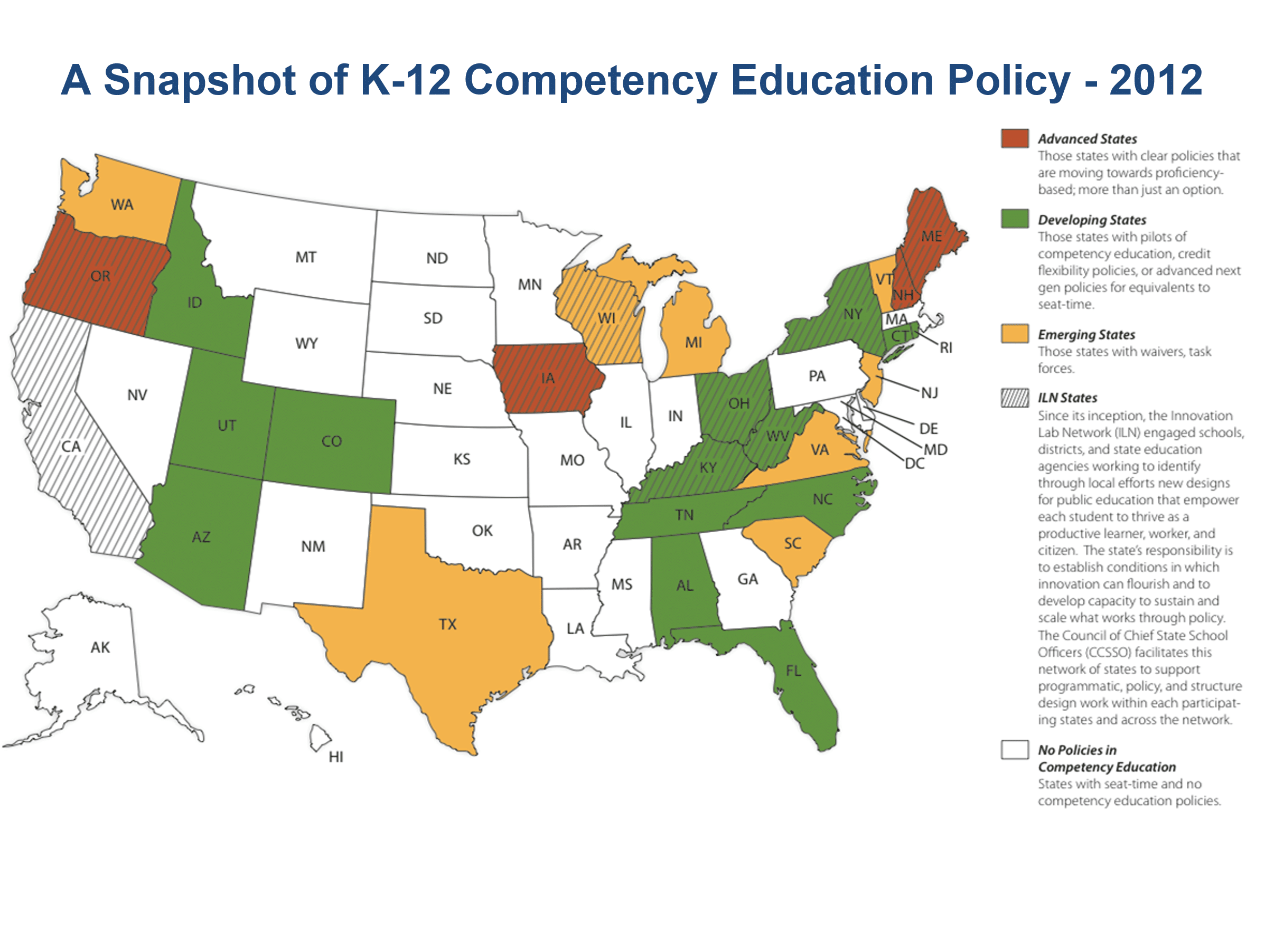
By 2017, almost every state has implemented some type of policy to open up innovation space. We estimated that in 2016, 4 percent of the districts were either planning or implementing competency-based education. In 2017, there is so much interest that we are unable to determine the exact numbers – we estimate somewhere between 6-10 percent of districts are learning about, planning, or implementing.

In June 2017, we held a National Summit on K-12 Competency-Based Education in response to increasing interest and expansion, as we recognized that there were issues we needed to address if we were going to deliver on the promise (also the name of the book about the first district to become competency-based) and create a sustainable system. These four issues are: ensuring high quality design and implementation; getting very serious about equity; building the capacity to meet students where they are rather than deliver grade-level curriculum regardless of what students know and can do; and creating the policies that are going to be needed to create a sustainable system. You can find the draft papers on each of these issues here.
What are the policy strategies to advance competency education?
States are using a number of different strategies to introduce competency-based education, open up innovation space, or set a direction a statewide competency-based education system.

Several states, such as Idaho and Illinois, have recently created pilots to help build knowledge about competency-based education. Maine, Vermont, New Hampshire, and Colorado have all introduced proficiency-based diplomas or credits. Again, they are all in different stages of scaling, fine-tuning approaches, and clarifying the implications of the policies.
The federal ESSA has opened up new opportunities to rethink accountability for continuous improvement; redesign systems of assessment; and upgrade the systems to support the development of the educator workforce. It is up to states to take advantage of the opportunities under ESSA.
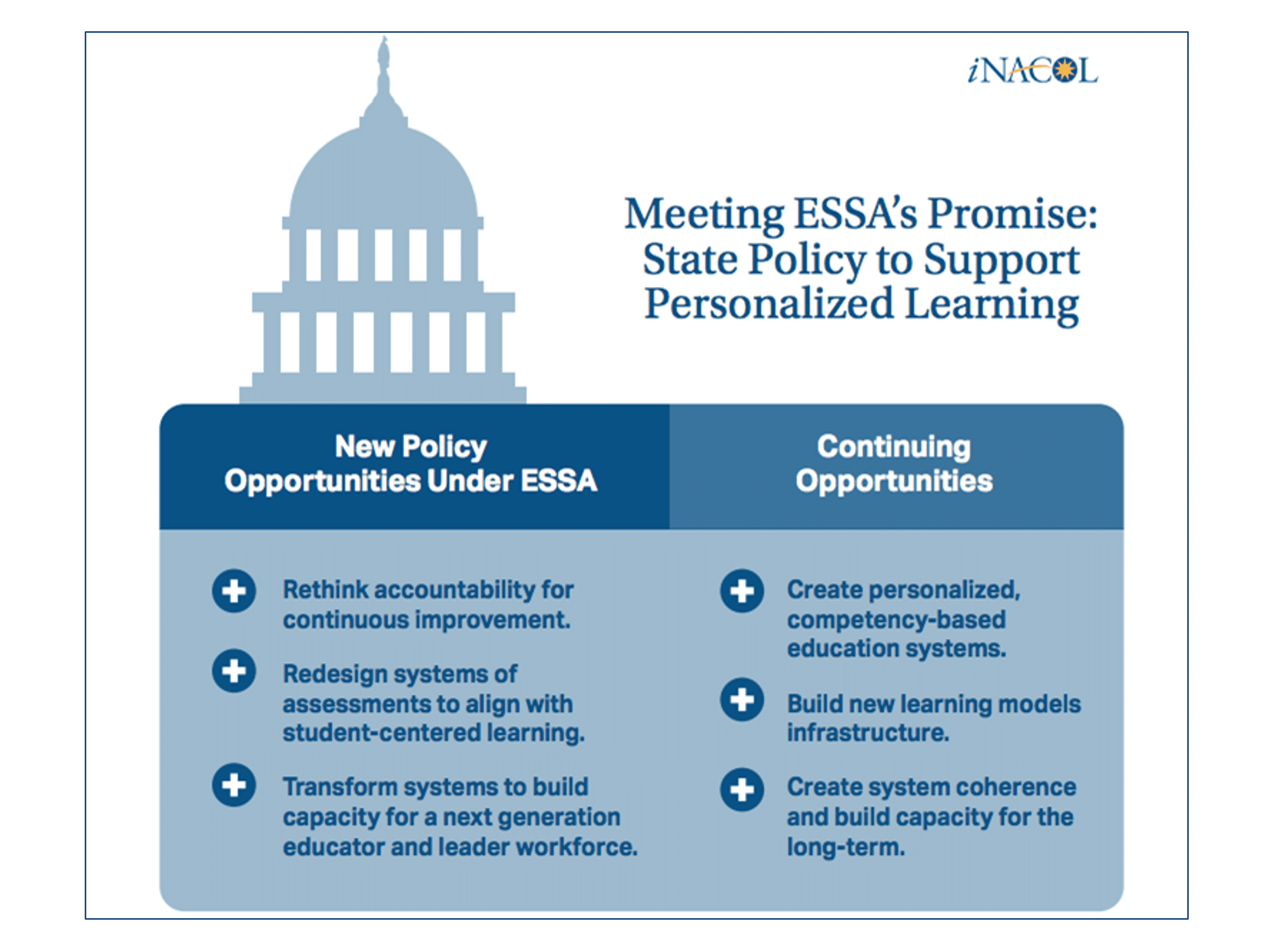
What are the potential intersections between K-12 & institutions of higher education?
Listening to the conversations at C-BEN, it’s very clear that the sectors can learn a lot from each other – and we do need to figure out how to open up those conversations. From the K-12 perspective, here are a few ways we could begin to work together.
First, it is critically important that high schools fully understand what it means to be college ready so they can work with students to prepare them. That is the essence of a proficiency-based diploma that ensures students have the skills, not just the seat-time. Creating tuning or calibrating processes with IHE and districts would be catalytic. Second, ask your institutions to join the Proficiency Pledge developed by Great Schools Partnership and the New England Secondary Schools Consortium that promises that students at competency-based schools will not be harmed in the college admissions process. The more colleges and universities, the better we can overcome the fear of parents.
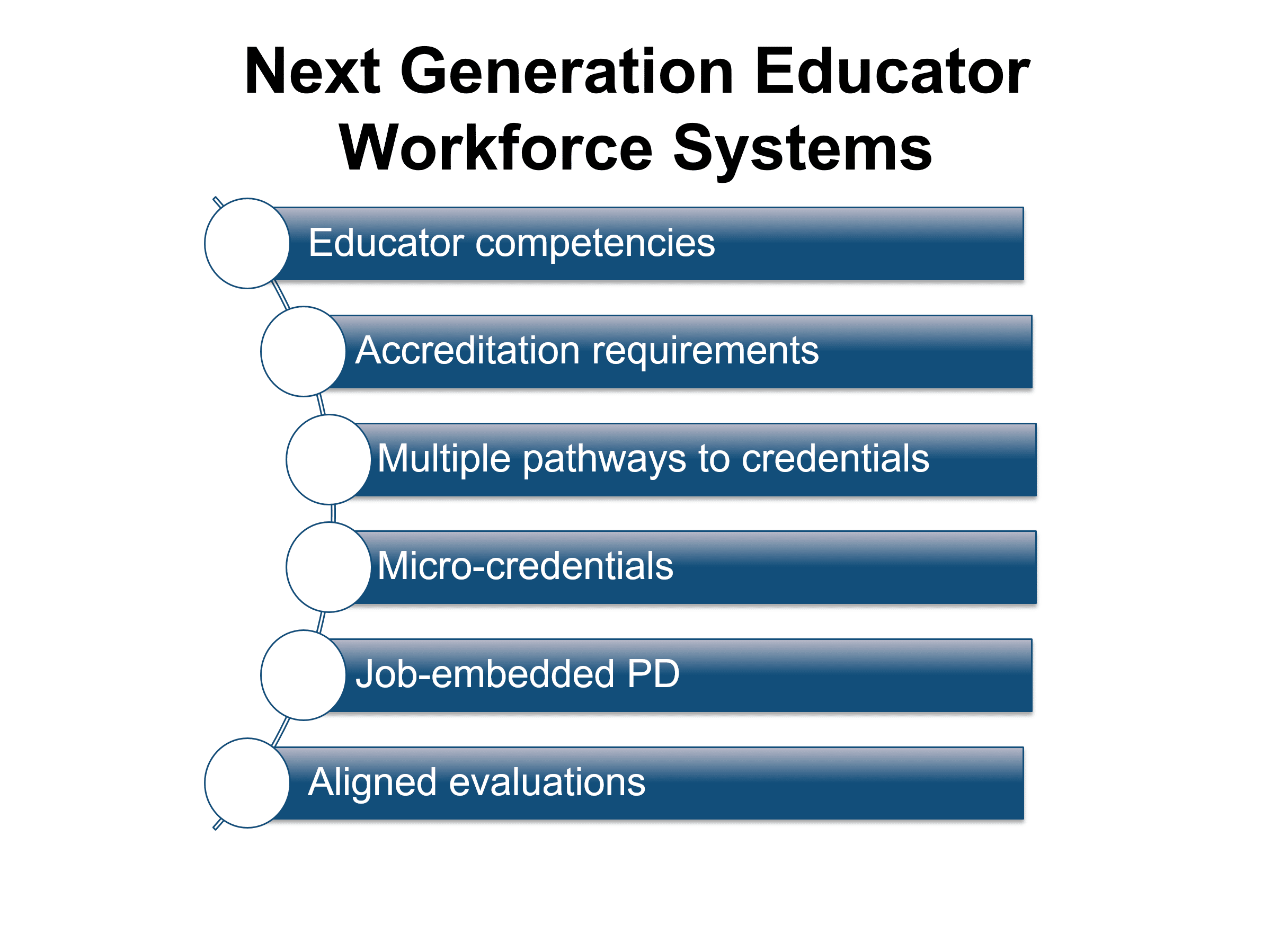
We also need to find ways to predict college success other than the GPA – it’s a mechanism that reinforces inequity by forcing schools to rank and sort students. And most important, we need to engage schools of education in learning about what teachers need to know and be able to do in personalized, competency-based schools as well as the adaptive leadership strategies needed for creating flexible, empowering organizations. A good starting point are the following reports:
- Educator Competencies for Personalized, Learner-Centered Teaching
- Leadership for Learning
- Leadership Competencies for Learner-Centered, Personalized Education
If you have questions about K-12 competency-based education or ideas about how IHE and K-12 can work together, please contact me: chris at metisnet dot net.
